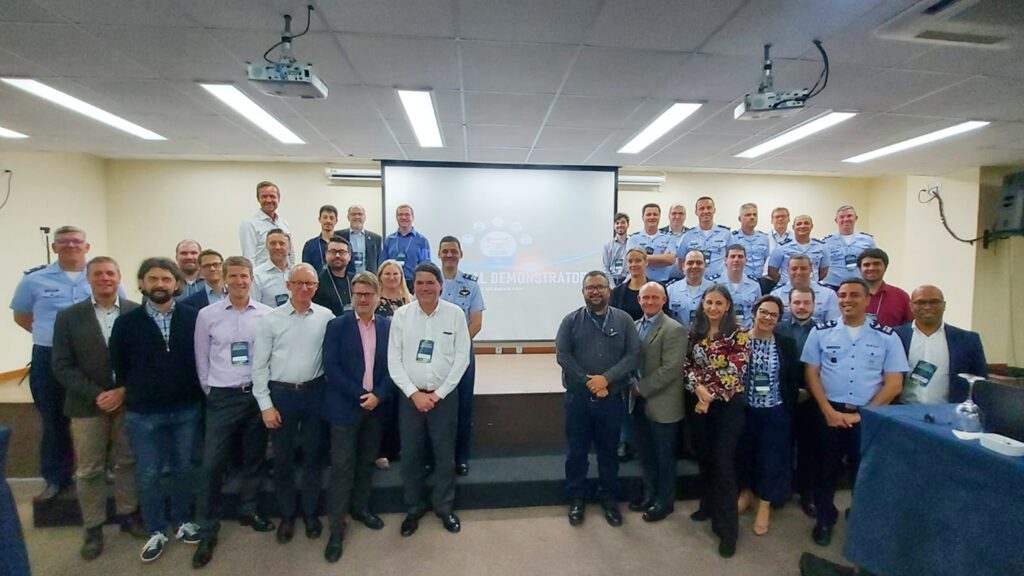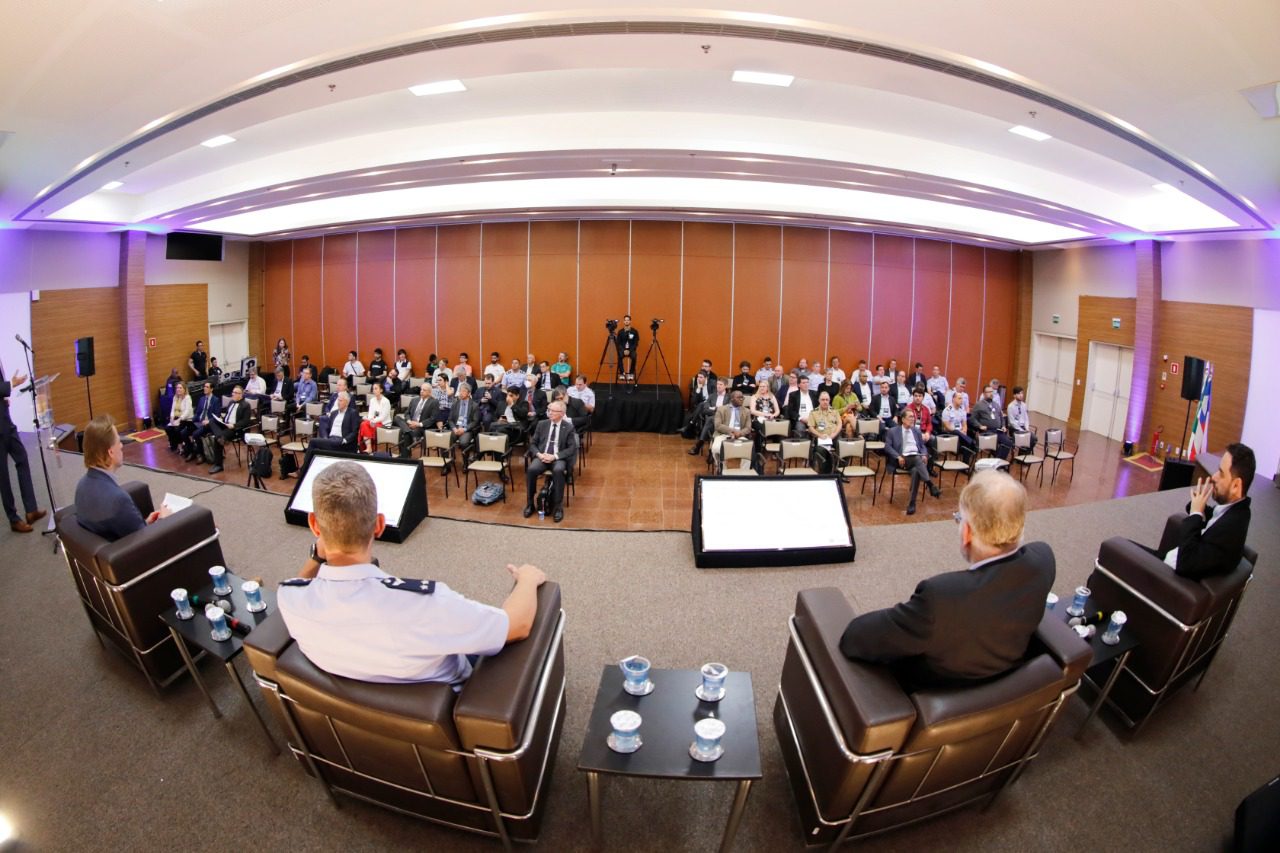Event took place in Salvador (BA), during the High Level Group Meeting on Aeronautics
Air Force Agency, by Lieutenant Letícia Faria and Major Oliveira Lima
The cooperation between Brazil and Sweden in the aeronautical field, through the Air Domain Study (ADS) Project, had, between November 7th and 9th, one more step in its schedule. The High Level Group on Aeronautics, formed by military and researchers from the Brazilian Air Force (FAB) – part of the Science and Technology Institutes (ICTs) -, government representatives and companies from Brazil and Sweden, were gathered for a meeting that aims to align the main initiatives within the bilateral cooperation.
The researchers participated in the 11th Brazil-Sweden Workshop on Aeronautics, held at SENAI-CIMATEC in Salvador (BA). The event was attended by the Ministry of Science, Technology and Innovations (MCTI).
The Chief of the Seventh Air Staff (EMAER), Air Brigadier Roberto da Cunha Follador, mediated the workshop’s discussion panels and highlighted the importance of FAB in these meetings. “We are here to show the society and the scientific community the vision of the Air Force, of Defense and how these developed technologies have a positive impact on the aeronautical environment,” said the General Officer.
For the Dean of the ITA, Professor Anderson Ribeiro Correia, participating in these meetings provides countless results. “They bring, at this moment, actors from all axes of the triple helix. This interaction is very rich and brings great results for the projects,” he explains.
Air Domain Study (ADS) Projects

The ADS studies address topics such as manned and unmanned systems, air navigation and machine learning. Currently, the study has six projects financed by Brazil and Sweden, which seek to develop knowledge and dual solutions involving universities and companies.
The project called Safe Integration of Different Unmanned Aircraft (SIMUA) is managed by Major Air Traffic Control Specialist Jorge Alexandre de Almeida Régis, from the Second Integrated Center for Air Defense and Air Traffic Control (CINDACTA II) and ITA professor Christopher Cerqueira. The objective is to provide that, within an environment hitherto used only by manned aircraft, it will be possible to insert the new technology for the benefit of society. In addition, the capability will be studied from two perspectives, one from the point of view of air traffic management, and the other from the point of view of the technologies that should be on board the aircraft.
Another project is the Human-Machine Interface (HMI). ITA’s Pro-Rector of Graduate Studies and Coordinator, Professor Emília Villani, PhD, explains. “It addresses challenges related to human factors in the interaction between pilot and aircraft, including how to work with systems with different degrees of autonomy, incorporate technologies from the digitalization era such as augmented reality in aviation, and also the interaction between manned and unmanned aircraft,” she points out.
The Autonomous Search System (AuSSys) project aims to develop an Artificial Intelligence (AI) to assist in Search and Rescue missions in high seas. “The algorithm to be developed will build an AI model that will assist in these diverse missions, both for people, boats, oil slicks,” explains ITA Professor Filipe Verri, who is running the study.

Multi Sensor Image-Based Navigation (MSIBN) is another project of the Air Domain Study. According to the Major Engineer from the Institute of Advanced Studies (IEAv), Tales de Barros Caldas, who is part of the project, the focus is to allow aircraft to navigate by looking at the terrain, interpreting the image information and navigating from one destination to another in a way that is independent of the GPS (Global Positioning System).
ITA Professor Davi Santos coordinates the Cooperative Threat Engagement using Drone Swarms (CTEDS) project. He explains that a scenario involving autonomous and piloted drones is analyzed, with the objective of surveying an area protected against aerial threats by camicases drones.
Finally, the project headed by the Vice-Director of the Institute for Operational Applications (IAOp), Lieutenant Colonel Alexandre Dias Irigon, is the Virtual Demonstrator (VD). “It is a project that integrates the other Air Domain Study projects. We will create a common arena for simulating the applications of the other projects. With this, we will deliver results, metrics and measures that can improve the future work and deliveries of the ADS,” concludes the Officer.
Photos: Sergeant Figueira / CECOMSAER – Video: Sergeant André Souza / CECOMSAER *** Translated by the DEFCONPress FYI Team ***
